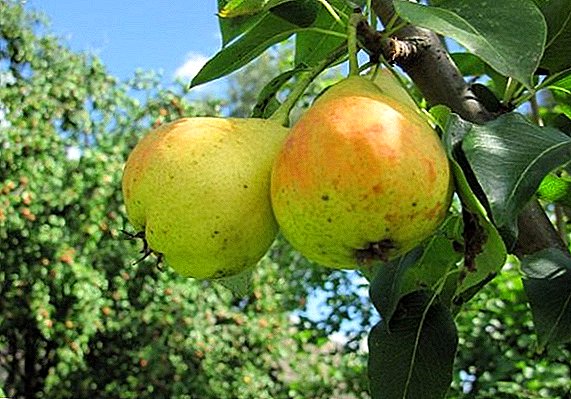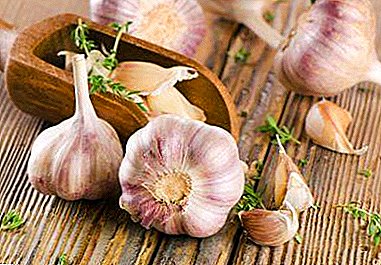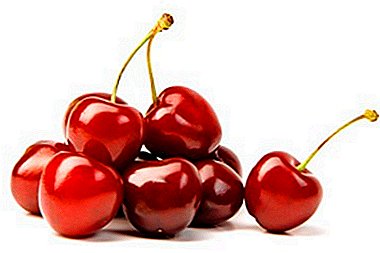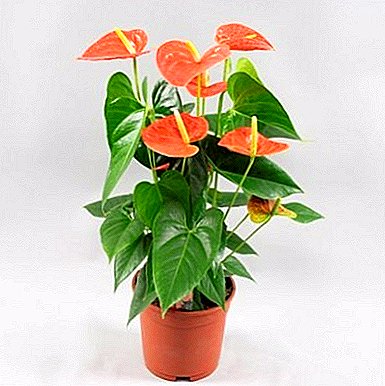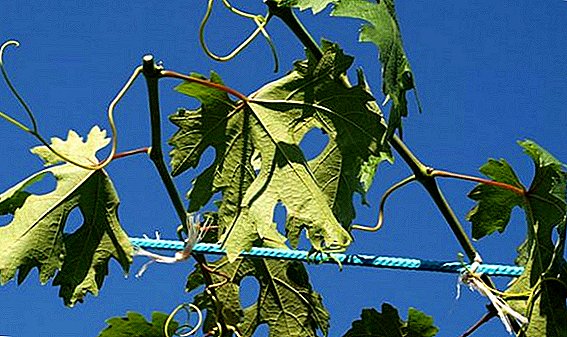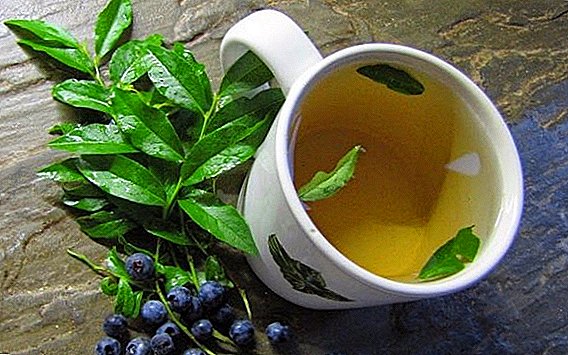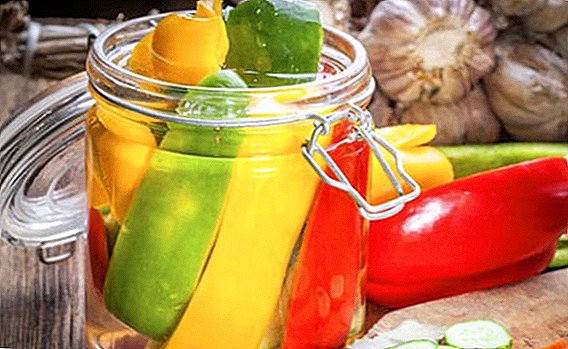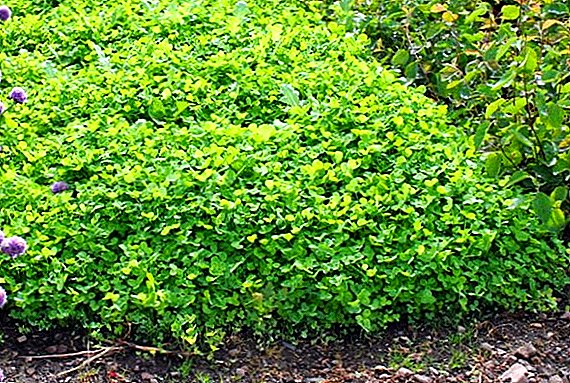 Every gardener knows that the work on the harvest of tomatoes is a long and laborious process, the result of which often depends on the amount of effort spent.
Every gardener knows that the work on the harvest of tomatoes is a long and laborious process, the result of which often depends on the amount of effort spent.
One of the stages of this process is the selection and use of green manure - plants that act as organic fertilizers and nourish the soil for a rich harvest.
The benefits of using sideratov
Over the use of natural feeding will have to sweat, but it's worth it. 
- These fertilizers help tomatoes grow green mass much faster. This happens due to the involvement of bacteria that produce nitrogen, which stimulates growth.
- Siderates in the form of top dressing are organic compounds whose duration of action exceeds the effect of chemical preparations.
Did you know? Tomatoes are involved in cosmetology: perfumers use the smell of their leaves and fruits.
- The roots of such fertilizers do not allow weeds to sprout.
- Plant nitrogen in their composition is harmless to both the tomato and the environment.
- This is a natural way of feeding, because it is from the plants of previous generations that the nutrient soil and the basis for the growth of a new culture are formed.
- Such natural fertilizers are much cheaper than commercial products, and their effect will delight in the first season.

The best green mans for tomatoes
It is difficult to answer unequivocally which siderrate is best for tomatoes, because each plant has strengths:
- white mustard effectively resists pests and soil erosion, does not allow weeds to grow, and also saturates the soil with nutrients: phosphorus and sulfur, which are responsible for fertility;

- Vika - One of the best options for tomatoes. The roots accumulate nitrogen, and the green mass turns into excellent organic matter, which increases tomato yields by 30–40%;

- phacelia neutralizes soil acidity, eliminates weeds, prevents the appearance of fungi and viruses. As a fertilizer, it increases the concentration of nitrogen, phosphorus, potassium in the soil;

- alfalfa from the legume family improves soil structure, enriching it with useful trace elements and promotes nitrogen accumulation;

- lupine due to the loosening of the earth increases the level of oxygen in it, and also effectively eliminates pests.

Important! The use of several cultures as a siderat at the same time will significantly increase the effectiveness of their impact.
What crops it is not desirable to use under tomatoes
Having understood that it is better to use as a green fertilizer for tomatoes, you should also pay attention to the plants, which absolutely can not be used as a siderat for tomatoes.
In the first place, plants with toxins should be avoided: datura, hogweed, nightshade, etc. Also, do not plant tomatoes after eggplants, potatoes, peppers and other nightshade.
Rye, buckwheat, milk vetch, and oats are also used as a siderata.
Landing features: time and methods
An important aspect of the choice of natural fertilizers will be the time of their disembarkation. Green manure tomatoes are planted throughout the season, from early spring to late autumn.  For spring, it is better to select crops that are not afraid of sudden frosts, can grow at relatively low temperatures. Sprouted future fertilizers are mown early to make room for tomatoes.
For spring, it is better to select crops that are not afraid of sudden frosts, can grow at relatively low temperatures. Sprouted future fertilizers are mown early to make room for tomatoes.
Important! Some of the spring sideratov mow in the summer, the main thing is to do it before they begin to bloom: during this period the concentration of useful elements in them is maximum.Many aspiring gardeners worry about planting mustard in front of tomatoes in the spring. It should be noted that, along with phacelia, white mustard is the best option for this period. For greater efficiency, cut plants can be watered with additional fertilizer or fertilizer.
As well as siderats, organic fertilizers include straw, bone and fish meal, milk whey, potato peelings, egg shells, banana skins.With the help of such additives, the synthesis of green mass is accelerated, which increases the nutritional value of the soil. As for the autumn period, it is better to plant winter rye or the same mustard.
Planting in this case is carried out after harvesting, and sprouted plants overwinter under snow in the form of green grass. Green manures for tomatoes, which are planted in autumn, are mown in spring right before planting the tomatoes themselves. In addition to mowing, when the green mass is removed and the green manure roots remain in the ground, there are two more methods of using these natural fertilizers:
- plowing. The method is quite fast, but many farmers consider it to be ineffective, because as a result of digging up the soil, beneficial bacteria in its composition are destroyed and the quality of fertilizers deteriorates;
- simultaneous cultivation of fertilizers and tomatoes. Quite a laborious process, but dressing in this case also does not allow weeds to interfere with the growth of tomatoes.
Did you know? In Greece and Italy there are museums of tomatoes.
The main differences in the use of green mans in the greenhouse and open ground
Green mans for tomatoes are used not only in the open field, but also in greenhouses. They do an excellent job with one of the most important problems of greenhouse tomatoes - harmful pathogens.
After all, natural fertilizers in this case replace crop rotation, feed the soil with nitrogen and destroy pests.  However, the use of green manure in greenhouses has its own nuances associated with the timing and methods of planting. For example, rye is sown in September, after harvesting, so that by mid-spring the green mass will nourish the soil with useful substances.
However, the use of green manure in greenhouses has its own nuances associated with the timing and methods of planting. For example, rye is sown in September, after harvesting, so that by mid-spring the green mass will nourish the soil with useful substances.
But just before planting tomatoes rye clean. What other siderats can be sown in a greenhouse under the tomatoes, it is easy to guess: these are all the same vetch and mustard.
Well nourishes the soil and beans with nitrogen. Its roots are located at different levels with tomatoes, so they do not have to compete for food.
Siderats are a great way to take care of the future harvest of tomatoes, because they not only nourish, but also disinfect the soil under the tomatoes. However, to obtain a rich harvest will have to work hard, picking up and growing natural fertilizers.


